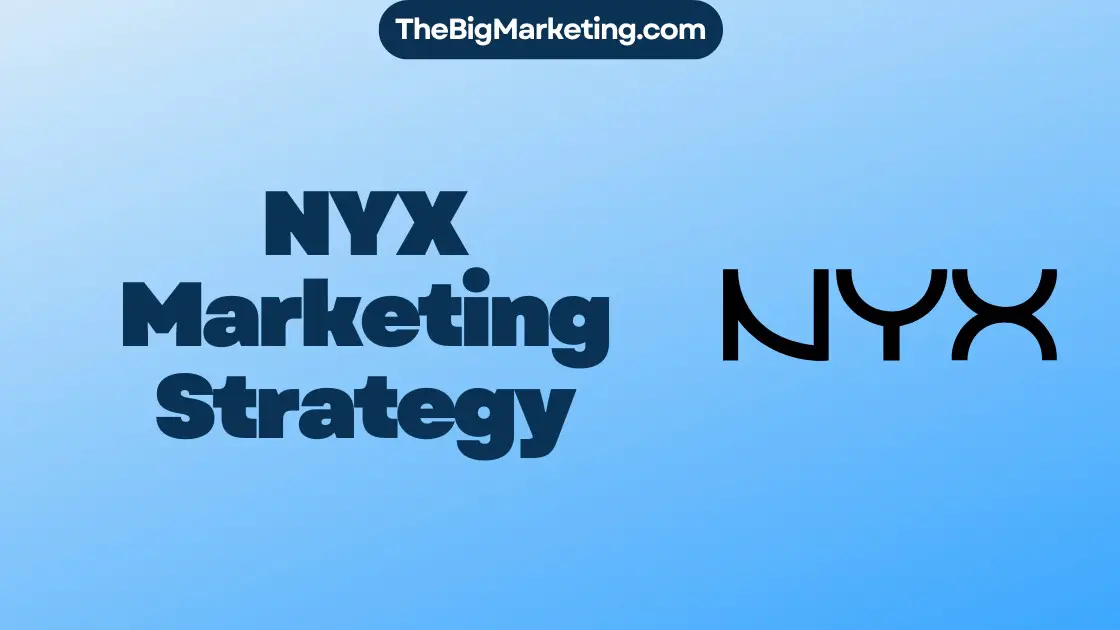MetLife Inc., a renowned provider of insurance, asset management, annuities, and employee benefits, has devised a dynamic marketing strategy to propel its growth in 2024. With a focus on customer engagement, digital advertising, and brand promotion, MetLife aims to strengthen its position in the insurance market. By leveraging market research, corporate strategy, and competitive analysis, MetLife is setting the stage for an impactful and customer-centric approach.
Their marketing strategy encompasses a range of initiatives, including innovative digital advertising campaigns and personalized branding. By harnessing the power of data-driven insights, MetLife plans to tailor its offerings to meet the specific needs of potential customers. This data-driven approach will also enable the company to optimize internal processes, driving efficiency and ensuring maximum customer satisfaction.
MetLife’s commitment to customer engagement goes hand-in-hand with their adoption of technological advancements. Through artificial intelligence, big data analytics, and blockchain technology, MetLife aims to deliver a seamless and personalized customer experience. Their focus on digital tools empowers their salesforce to foster stronger customer relationships and generate sales.
Moreover, MetLife recognizes the importance of environmental sustainability. The company aims to achieve net-zero greenhouse gas emissions by 2050 or sooner, aligning their operations and investment portfolio with sustainable practices. This commitment to environmental initiatives is a testament to MetLife’s dedication to corporate social responsibility.
Key Takeaways:
- MetLife’s marketing strategy for 2024 focuses on customer engagement and brand promotion.
- Utilizing innovative digital advertising campaigns and personalized branding initiatives, MetLife aims to target potential customers effectively.
- The company leverages market research, corporate strategy, and competitive analysis to inform its marketing decisions.
- MetLife adopts data-driven approaches, artificial intelligence, and big data analytics to enhance customer engagement and streamline internal processes.
- MetLife is committed to environmental sustainability, aiming to achieve net-zero greenhouse gas emissions by 2050 or sooner.
Key Highlights of MetLife Market Analysis
The MetLife insurance market analysis report provides a comprehensive overview of the global and regional life insurance industry. It examines the key trends, drivers, challenges, and technological developments that are shaping MetLife’s insurance strategy. The report also delves into the competitive landscape, offering valuable insights into leading companies and the premium and profitability trends in top insurance markets.
One of the key regions analyzed in the report is North America, which remains a dominant force in the insurance industry. The region’s robust economy, increasing awareness about insurance products, and evolving customer preferences contribute to its growth. Europe, another significant market, is witnessing advancements in digitalization and technological adoption, driving insurance industry transformation.
In the Asia-Pacific region, rising disposable incomes, expanding middle-class populations, and favorable government initiatives are key factors driving insurance market growth. The Middle East and Africa are experiencing an increasing demand for insurance, fueled by infrastructure development and economic diversification. South and Central America, known for its growing economies and improving regulatory environments, create new opportunities for insurance providers.
Key Trends Shaping MetLife’s Insurance Strategy
- Customer-Centric Approach: MetLife recognizes the importance of understanding and meeting its customers’ unique needs and preferences. By adopting a customer-centric approach, the company aims to provide personalized insurance solutions and enhance customer satisfaction.
- Technological Advancements: The insurance industry is witnessing significant technological advancements, including the use of artificial intelligence, big data analytics, and blockchain. MetLife embraces these technologies to streamline operations, improve underwriting efficiency, and enhance customer experience.
- Changing Demographics: Demographic shifts, such as an aging population and changes in family structures, are impacting the insurance industry. MetLife adapts to these changes by offering suitable products and services to cater to the evolving needs of different demographics.
- Sustainability and Environmental Awareness: In line with global sustainability goals, MetLife recognizes the importance of environmental stewardship. The company integrates environmental considerations into its business operations and investment decisions, advancing towards a more sustainable future.
By analyzing and adapting to these key trends, MetLife aims to stay at the forefront of the insurance industry and meet the evolving demands of its customers. The company’s market analysis provides valuable insights into the ever-changing insurance landscape, empowering decision-makers to develop effective strategies and drive sustainable growth.
MetLife’s Technological Innovations and Environmental Initiatives
MetLife, a leading provider of insurance products and services, has been at the forefront of harnessing technological advancements to streamline operations and enhance the customer experience. As part of their commitment to innovation, MetLife has embraced emerging technologies such as artificial intelligence (AI), big data, blockchain, and cybersecurity.
Artificial intelligence plays a significant role in MetLife’s operations, enabling the automation of processes and enhancing customer service. Through AI-powered chatbots and virtual assistants, MetLife can provide prompt and personalized support to customers, improving overall satisfaction.
Big data analytics has revolutionized the way MetLife gathers and interprets customer data. By leveraging large datasets, MetLife gains deep insights into customer behavior, preferences, and risk profiles. This information allows the company to develop tailored products and services that meet the unique needs of individual customers.
Blockchain technology has also found its way into MetLife’s operations, providing transparency and security in insurance transactions. By utilizing blockchain, MetLife can enhance data integrity, streamline underwriting processes, and reduce fraudulent claims.
In an era where cybersecurity threats are on the rise, MetLife has made substantial investments in safeguarding customer data and ensuring the confidentiality of financial transactions. Robust cybersecurity protocols and advanced encryption techniques protect sensitive information, providing customers with peace of mind.
MetLife’s commitment to environmental sustainability is aligned with its technological innovations. By integrating sustainability practices within their operations, MetLife aims to reduce its carbon footprint and contribute to the fight against climate change. The company has set ambitious goals to achieve net-zero greenhouse gas emissions by 2050 or sooner.
To highlight MetLife’s technological innovations and environmental initiatives, the following table showcases some of the key technologies and sustainability efforts employed by the company:
| Technology/Sustainability Initiative | Description |
|---|---|
| Artificial Intelligence (AI) | Utilizing AI-powered chatbots and virtual assistants to enhance customer service and support. |
| Big Data Analytics | Leveraging large datasets to gain valuable insights into customer behavior and develop personalized products. |
| Blockchain | Utilizing blockchain technology to enhance transparency and security in insurance transactions. |
| Cybersecurity | Implementing robust protocols and encryption techniques to protect customer data and financial transactions. |
| Environmental Sustainability | Commitment to achieve net-zero greenhouse gas emissions by 2050 or sooner. |
MetLife’s technological innovations and environmental initiatives demonstrate their dedication to leveraging cutting-edge technologies for the benefit of their customers and the environment. By embracing AI, big data, blockchain, and prioritizing cybersecurity and environmental sustainability, MetLife continues to set industry standards and pave the way for a more efficient, secure, and sustainable insurance industry.
Data-Driven Approach to Customer Engagement
MetLife understands the importance of customer engagement in today’s competitive insurance industry. To deliver exceptional customer experiences, MetLife has embraced a data-driven approach to enhance their engagement strategies.
MetLife empowers their salesforce with digital tools and leverages machine learning algorithms to generate personalized product recommendations for their customers. By harnessing the power of machine learning, MetLife can analyze vast amounts of data to identify customer preferences, behaviors, and needs, enabling them to offer tailored solutions that meet individual requirements.
One of the key components of MetLife’s data-driven approach is their big data platform, which serves as the foundation for their customer engagement initiatives. This platform enables the collection, storage, and analysis of vast amounts of customer data, allowing MetLife to gain valuable insights into customer behaviors and preferences.
Personalized Products and Services
With the help of their big data platform, MetLife can develop personalized products and services that cater to their customers’ unique needs. By understanding customer demands and preferences, MetLife can create tailored solutions that provide the right coverage and support for each individual.
Machine learning algorithms play a crucial role in this process, analyzing customer data and identifying patterns and trends that inform the development of personalized products. This data-driven approach ensures that customers receive relevant and valuable offerings that address their specific requirements.
The Power of Big Data
The utilization of big data in customer engagement allows MetLife to go beyond traditional methods and delve deeper into customer insights. By leveraging AI technologies and data analytics, MetLife can forecast customer service requests, streamline claims processes, and improve overall operational efficiency.
The image above highlights MetLife’s commitment to customer engagement by utilizing a data-driven approach. By leveraging their big data platform, MetLife can analyze vast amounts of customer data to gain valuable insights and improve their engagement strategies.
In conclusion, MetLife’s data-driven approach to customer engagement enables them to develop personalized products, enhance customer experiences, and improve operational efficiency. By harnessing the power of machine learning and their big data platform, MetLife is at the forefront of delivering exceptional customer engagement in the insurance industry.
Market Segmentation and Regional Analysis
MetLife’s market strategy and analysis cover key regions including North America, Europe, Asia-Pacific, the Middle East and Africa, and South and Central America. While the company’s business is skewed towards North America, they have a comprehensive presence in other regions as well, aiming to tap into diverse market opportunities.
Let’s take a closer look at the regional dynamics and potential of each market:
North America:
As the region with the largest share in MetLife’s business, North America offers significant growth potential. The insurance market in North America is highly developed and competitive, with customers seeking various insurance products and solutions.
Europe:
In Europe, MetLife has established a strong foothold in key markets. The region presents opportunities for expansion, with high demand for life insurance, retirement planning, and other financial products. MetLife’s brand recognition and competitive offerings position them well in the European insurance landscape.
Asia-Pacific:
The Asia-Pacific region is a thriving market with a rapidly growing middle-class population. MetLife’s presence in Asia-Pacific is strategic, targeting countries with emerging insurance markets, such as China, India, and Indonesia. Factors such as rising income levels, urbanization, and increased awareness of insurance products contribute to the region’s growth potential.
Middle East and Africa:
The Middle East and Africa region provides unique opportunities for insurers, including MetLife. The insurance industry in this region is gradually expanding due to favorable regulatory changes and increasing awareness of the need for insurance coverage. MetLife’s presence in countries such as UAE, South Africa, and Egypt allows them to tap into the growing market potential.
South and Central America:
MetLife operates in several countries across South and Central America, capitalizing on the region’s economic growth and expanding insurance market. Brazil, Mexico, and Chile are among the key markets where MetLife offers a range of insurance products. The company’s strong brand reputation and local expertise contribute to its success in these markets.
The table below summarizes the key findings of MetLife’s market segmentation and regional analysis:
| Region | Market Dynamics | Premium and Profitability Trends | Competitive Landscape |
|---|---|---|---|
| North America | Strong market presence with high demand for insurance products | Stable premium growth and profitability | Intense competition among leading insurers |
| Europe | Growing market with a focus on life insurance and retirement planning | Potential for premium growth in untapped segments | Competitive market with established players |
| Asia-Pacific | Rapidly expanding market driven by a growing middle class | Strong premium growth and profitable opportunities | Increasing competition from local and international insurers |
| Middle East and Africa | Increasing insurance penetration and favorable regulatory changes | Potential for premium growth in underserved markets | Rapidly evolving competitive landscape |
| South and Central America | Expanding insurance market with rising middle-class population | Stable premium growth and profitability | Competition from regional and global insurers |
Key Lines of Business in MetLife’s Insurance Strategy
MetLife, a leading insurance provider, operates across various lines of business to cater to the diverse needs of its customers. The company offers a range of reliable insurance products and services to ensure financial security and protection in different areas of life. Here are the key lines of business in MetLife’s insurance strategy:
1. Life Insurance
Life insurance is a vital component of MetLife’s offerings, providing individuals and their families with financial protection in the event of the policyholder’s death. MetLife provides a range of life insurance products, including term life, variable life, and universal life insurance, tailored to meet the unique needs of different customers.
2. Motor Insurance
MetLife also offers motor insurance, providing coverage for vehicles against damage, theft, and accidents. This line of business ensures that customers have the necessary financial protection and support when faced with unexpected vehicle-related expenses.
3. General Insurance
MetLife’s general insurance line of business covers a wide range of non-life insurance products, such as home insurance, travel insurance, and personal liability insurance. These products safeguard individuals and their assets from various risks and uncertainties.
4. Pension
MetLife recognizes the importance of retirement planning and offers pension products to help individuals secure their financial future. These products provide a steady income stream post-retirement, enabling a comfortable lifestyle and peace of mind.
5. Property Insurance
MetLife provides property insurance, protecting homeowners and property owners from potential losses due to damage caused by events like fire, natural disasters, or theft. This line of business offers financial security, ensuring that individuals can rebuild or replace their properties when faced with unexpected events.
6. Financial Lines
MetLife’s financial lines of business cater to the insurance needs of businesses and organizations. This line includes specialized insurance products such as directors and officers (D&O) liability insurance, professional liability insurance, and cyber insurance, among others.
7. Miscellaneous
In addition to the core lines of business, MetLife also offers miscellaneous insurance products to address specific customer needs. This may include niche products, coverage for unique risks, or specialized insurance solutions for specific industries.
With its diverse lines of business, MetLife aims to provide comprehensive insurance solutions to individuals, families, and businesses. The company’s commitment to customer-centricity and expertise in each line of business makes it a trusted name in the insurance industry.
| Lines of Business | Description |
|---|---|
| Life Insurance | Provides financial protection in the event of the policyholder’s death. |
| Motor Insurance | Offers coverage for vehicles against damage, theft, and accidents. |
| General Insurance | Covers non-life insurance products such as home insurance and travel insurance. |
| Pension | Provides retirement planning products for a secure financial future. |
| Property Insurance | Protects homeowners and property owners from property-related losses. |
| Financial Lines | Offers specialized insurance products for businesses and organizations. |
| Miscellaneous | Addresses unique insurance needs and provides specialized solutions. |
Global Economic Outlook and Impact on Insurance Industry
The global economic outlook plays a crucial role in shaping the insurance industry. It influences various factors that impact customer behavior and purchasing decisions, thereby affecting companies like MetLife. Let’s explore some key elements that shape the global economic landscape and their potential impact on the insurance industry.
1. Growth Projections
Growth projections provide insights into the future trajectory of the global economy. Positive growth projections indicate a stable and expanding economy, leading to increased disposable income and greater insurance coverage. Conversely, lower growth projections may result in reduced consumer spending power and a potentially challenging environment for insurance companies.
2. Inflation Trends
Inflation trends affect the purchasing power of individuals and businesses. High inflation rates can erode the value of insurance coverage, making it necessary for insurance companies to adjust premiums and coverage to keep up with rising costs. Conversely, low inflation rates may create a more favorable environment for insurance companies by reducing the need for frequent premium adjustments.
3. Interest Rates
Interest rates play a significant role in the insurance industry. Higher interest rates generally result in increased investment returns for insurance companies, which can positively impact their profitability. Conversely, lower interest rates may lead to reduced investment income, potentially putting pressure on insurance companies to adjust their pricing strategies and product offerings.
4. Regulatory Environment
The regulatory environment, including changes in regulations and policies, can significantly impact the insurance industry. Organizations like MetLife may need to adapt their operations and strategies to ensure compliance with evolving regulatory requirements, which can sometimes result in additional costs and operational disruptions.
5. Market Volatility
Market volatility, driven by various factors such as geopolitical events, economic crises, or natural disasters, can have implications for the insurance industry. Heightened volatility can affect investment portfolios, potentially impacting insurers’ assets and overall financial stability. It is crucial for insurance companies to assess and manage their exposure to market volatility effectively.
Overall, staying abreast of global economic trends and understanding their potential impact on the insurance industry is essential for companies like MetLife. By closely monitoring growth projections, inflation trends, interest rates, regulatory developments, and market volatility, insurance companies can adjust their strategies, products, and services to thrive in a dynamic and ever-changing business environment.
Credit and Investment Analysis in MetLife
As part of its comprehensive approach to financial analysis, MetLife focuses on credit and investment analysis to evaluate credit fundamentals, spreads, and market trends. This analysis provides valuable insights into credit performance, investment opportunities, and potential risks. By closely monitoring various asset classes, including investment-grade bonds, high-yield bonds, leveraged loans, municipal bonds, and emerging markets, MetLife’s analysts can make informed decisions to optimize investment portfolios and drive growth.
Through credit analysis, MetLife assesses the creditworthiness and financial stability of entities issuing debt. Utilizing advanced models and extensive research, they evaluate factors such as a company’s financial strength, cash flow, debt servicing capacity, and default risk. By scrutinizing credit fundamentals, MetLife identifies investment-grade bonds, which are considered relatively safer due to their lower risk of default. This approach allows them to make informed decisions about allocating capital and managing risk, ensuring a solid foundation for their investment strategy.
Investment analysis plays a crucial role in MetLife’s approach to portfolio management. By analyzing market trends and macroeconomic indicators, they identify potential investment opportunities that align with their goals and risk appetite. MetLife’s investment analysts closely monitor market conditions, evaluating factors such as interest rates, spreads, and liquidity. This analysis enables them to identify attractive investment prospects across various asset classes, potentially generating long-term value for their portfolios.
Analysis of Asset Classes
MetLife’s credit and investment analysis encompasses several asset classes, each with its unique characteristics and risk-reward profiles:
- Investment-Grade Bonds: MetLife evaluates investment-grade bonds issued by reliable and financially robust entities. These bonds are considered relatively safe due to their lower risk of default.
- High-Yield Bonds: MetLife’s analysis also includes high-yield bonds, which offer higher yields but come with increased credit risk.
- Leveraged Loans: MetLife analyzes leveraged loans, which are loans extended to entities with lower credit ratings. These loans often carry higher interest rates to compensate for the increased risks.
- Municipal Bonds: MetLife assesses the creditworthiness of municipal bonds issued by state and local governments, providing insights into the relative safety and return potential of these investments.
- Emerging Markets: MetLife’s analysis extends to emerging markets, evaluating the creditworthiness and investment potential of entities operating in these dynamic and fast-growing economies.
By diligently analyzing credit fundamentals, spreads, and market trends within these asset classes, MetLife gains a comprehensive understanding of the opportunities and risks present in the market. This analysis enables them to make informed investment decisions that align with their risk appetite and strategic objectives.
| Asset Class | Credit Analysis | Investment Opportunities | Risk Assessment |
|---|---|---|---|
| Investment-Grade Bonds | Thorough credit analysis to identify reliable issuers | Potential investments with lower risk of default | Lower credit risk, suitable for risk-averse investors |
| High-Yield Bonds | Evaluation of creditworthiness and default risk | Opportunities for higher yields | Higher credit risk, suitable for risk-tolerant investors |
| Leveraged Loans | Assessment of creditworthiness and debt servicing capacity | Investment potential in loans with higher yield potential | Higher credit risk and potential for higher returns |
| Municipal Bonds | Review of creditworthiness of state and local governments | Potential investments in reliable governmental entities | Varies based on the financial health of the issuing governments |
| Emerging Markets | Credit analysis of entities operating in dynamic economies | Opportunities for high-growth investments | Higher credit risk but potential for substantial returns |
Real Estate and Agricultural Market Analysis
The report includes a comprehensive analysis of the real estate market, covering various property sectors such as residential, retail, industrial, and office. It provides valuable insights into vacancy rates, rent growth, pricing trends, and challenges prevalent in the commercial real estate sector, particularly in the office segment.
Understanding the dynamics of the real estate market is crucial for investors, developers, and industry professionals seeking to capitalize on emerging opportunities. By analyzing vacancy rates, investors can gauge the demand and supply balance, identify potential investment hotspots, and make informed decisions. Pricing trends offer insights into market competitiveness and growth prospects, enabling stakeholders to assess market sustainability and forecast future returns.
The agricultural market analysis within the report encompasses critical factors such as farm income, farmland values, and crop prices. This analysis provides a comprehensive overview of the agricultural sector’s performance, highlighting both challenges and opportunities for stakeholders.
Agriculture plays a vital role in the economy, and understanding its market dynamics serves as a foundation for informed decision-making. Evaluating farm income assists in forecasting agricultural productivity and revenue potential. Farmland values provide insights into long-term investment opportunities and land-use strategies. Additionally, examining crop prices helps stakeholders navigate market volatility and anticipate trends affecting global food production and supply.
By exploring both the real estate and agricultural market spheres, the report provides readers with a holistic understanding of the opportunities and challenges within these sectors. Whether you are an investor looking for the next real estate investment or an agriculture industry professional seeking market insights, this analysis delivers comprehensive and valuable information to support your decision-making process.
Valuation and Investment Outlook
The current valuation and investment outlook in the equity market is influenced by various macroeconomic factors and valuation risks. As we analyze the market, it becomes evident that a more challenging backdrop is expected in the near term. It is therefore crucial for investors to adopt a cautious approach and focus on quality investments.
When evaluating the equity market outlook, it is important to consider the impact of macroeconomic factors. These factors include global economic trends, interest rates, inflation, and geopolitical events. Each of these elements can significantly influence market sentiment and investment decision-making.
Evaluating Valuation Risks
Valuation risks pose a potential challenge for investors in the equity market. As asset prices rise, the risk of overvaluation increases. It is essential to assess the fundamental value of stocks and ensure that they align with market trends. By conducting thorough research and analysis, investors can identify investment opportunities that offer attractive valuations.
One way to mitigate valuation risks is to diversify investment portfolios. By distributing investments across different sectors and asset classes, investors can reduce their exposure to specific valuation risks and overall market volatility.
The Attractiveness of Cash Investments
Amid the current market conditions, cash investments have gained attractiveness as a safe haven option for investors. Cash investments provide liquidity and stability, allowing investors to preserve capital during times of market uncertainty. Allocating a portion of the portfolio to cash investments can act as a cushion against potential market downturns and provide flexibility for future investment opportunities.
It is important to note that while cash investments offer stability, they may not generate significant returns in a low-interest-rate environment. Therefore, investors should carefully consider their investment objectives and risk tolerance when deciding on the allocation of their portfolio.
Investment Outlook Summary
In summary, the valuation and investment outlook in the equity market calls for a cautious approach with a focus on quality. By evaluating valuation risks and considering macroeconomic factors, investors can make informed investment decisions. Additionally, cash investments can provide stability and act as a hedge against market volatility. It is crucial for investors to stay updated on market trends and adapt their investment strategies accordingly to navigate the evolving landscape.
| Investment Considerations | Benefits |
|---|---|
| Diversification | Reduces exposure to specific valuation risks and market volatility. |
| Cash Investments | Provides liquidity, stability, and acts as a hedge against market uncertainty. |
| Informed Decision-making | Evaluating valuation risks and considering macroeconomic factors allows for informed investment decisions. |
Conclusion
MetLife’s marketing strategy for 2024 is built on a strong foundation of customer engagement, innovative digital advertising, and brand growth. The company’s data-driven approaches and technological innovations position them well to adapt to market trends and promote their brand effectively. Through strategic planning and thorough analysis of the insurance industry, MetLife has gained valuable insights into future prospects and growth potential.
As a leader in the insurance sector, MetLife recognizes the importance of navigating the competitive landscape to achieve sustainable growth and customer satisfaction. Their focus on strategic planning sets them apart from the competition, enabling them to make informed decisions and seize opportunities for expansion. With a comprehensive understanding of the market and customer needs, MetLife is poised for continued success.
Looking ahead, MetLife’s marketing strategy will continue to evolve, driven by their commitment to innovation and customer-centricity. Their approach to strategic planning ensures that they stay ahead of the curve and adapt to changing market dynamics. With a clear vision for the future and a customer-focused mindset, MetLife is well-positioned to achieve their growth objectives and maintain their position as a market leader.





